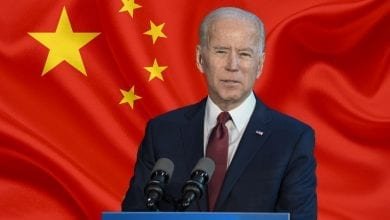New Study Calls into Question the Theory of Rising Inequality
If a thesis is repeated hundreds of times, many people believe it; if it is repeated millions of times, hardly anyone doubts it. The United States in particular is repeatedly cited as an example of how the “gap between rich and poor” is constantly widening. But two experts from the Office of Tax Analysis at the U.S. Treasury Department and the U.S. Congress’s Joint Committee on Taxation have now demonstrated in an almost 50-page essay in the renowned Journal of Political Economy that this thesis is simply not true.
The left-wing French economist Thomas Piketty, who is regarded as the principal proponent of the thesis, calculated that the income share of the top one percent of the wealthiest Americans has more than doubled since 1962. Among other things, he uses this to justify calls for taxes on the rich to be raised as high 90 percent and for all young people to be “gifted” a lump-sum of 120,000 euros in start-up money from the state.
The two authors come up with a figure that sounds far less dramatic. The top one percent’s share of pre-tax income in the United States increased from 11.1 percent (1962) to 13.8 percent (2019), i.e. by 2.7 percentage points. However, after taxes and transfer payments are taken into account, the increase was only 0.2 percentage points (from 8.6 to 8.8 percent).
And even with these figures, it is important to bear in mind that it is by no means the same people whose wealth or share of wealth increases over the years or decades. Only around 40 percent of those who were among the top earners retained their position in the following three years. This is a common mistake in the discussion surrounding inequality, where statistical categories are frequently conflated with individuals.
There are several reasons why the figures from Piketty and Auten & Splinter (the authors of the aforementioned paper) drift apart. First, Piketty did not take into account the impact of changes to the tax system. Before Ronald Reagan massively lowered taxes, many rich Americans preferred to retain their earnings in C corporations instead of taking dividends. As a result, this income did not appear on their tax returns and rich Americans appeared poorer than they were. After the tax reforms, many switched to S corporations (corporate passthrough entities), where income can be directly attributed to individual shareholders and is reported directly on the high-income taxpayers’ tax returns.
Another reason is that Piketty compared tax returns rather than individuals. In 1960, two-thirds of Americans were still filing tax returns as married couples, but this proportion has now almost halved. Among the top one percent, however, the proportion of those filing their tax returns as couples has barely fallen. This effect alone makes the increase in the income share of the top one percent appear significantly higher than it really is—if you compare forms (income tax returns) rather than people.
Many statistics do not take taxes and transfer income into account. Although taxes in the U.S. have been greatly reduced, especially during the Reagan era, numerous exemptions and tax-saving models have been abolished at the same time. The result, as Phil Gramm, Robert Ekelund, and John Early recently showed in their excellent book The Myth of American Inequality: How Government Biases Policy Debate: The actual percentage of their income paid by the top one percent of earners in tax in the U.S. was only 16.1 percent in 1962, when the top marginal rate was 91 percent. However, in 1988, when the top rate was only 28 percent, the percentage paid by the top one percent of earners had risen to 21.5 percent! As the top tax rate fell by two-thirds, the percentage of their income that the top one percent of tax filers paid in federal income and payroll taxes rose by a third.
Since the 1960s, the welfare state in the U.S. has been constantly expanded, so that the proportion of the population receiving transfer payments, and the amount of transfer payments, has increased continually. If one takes into account taxes on the one hand and transfer payments on the other, it becomes clear that the actual income, i.e. what a citizen has left after taxes and transfer payments, is much lower for the rich and much higher for those on low incomes.
I would like to add: in my opinion, the debate on inequality is much less important than the debate on how to eradicate poverty. We know from many countries in which the fight against poverty has been successful that inequality has initially risen sharply, for example in China and Vietnam. However, during my travels to these formerly very poor countries, I have never met anyone who wanted to go back to a time when people were more equal but poorer.
Rainer Zitelmann is the author of the book In Defence of Capitalism, which contains a chapter that addresses the discussion surrounding inequality in extensive detail.
Content syndicated from Fee.org (FEE) under Creative Commons license.
Agree/Disagree with the author(s)? Let them know in the comments below and be heard by 10’s of thousands of CDN readers each day!




